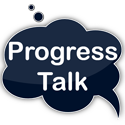Recent content by peterjudge
-
OpenEdge OECC 2.0 problems
I'd try disabling the OYel functionality in PASOE first, since that's another moving part. You could also post an example of the messages you're zeeing in the OECC logs here.- peterjudge
- Post #5
- Forum: Database Admin
-
Question Missing "OpenEdge.Core.Util.UTF8Encoder"
You should be able to use it in 12.2 ... will just need to get it from Progress' GitHub page. I don't believe that it uses any of the newer ABL that's not in 12.2.- peterjudge
- Post #4
- Forum: Development
-
Question Missing "OpenEdge.Core.Util.UTF8Encoder"
It looks like it was only added in 12.3 .- peterjudge
- Post #2
- Forum: Development
-
Question OCX 32-bit in OE 12 64-bit
You can download the Development Server (or at least, used to be able to) which allows compilation on other platforms. That does not include the previous version tools, to the best of my recollection.- peterjudge
- Post #5
- Forum: Development
-
Frames in TTY mode
Your scrollbar is coming from the WITH phrase on the FORM statement. If you reduce it to something that fits into the window you will not see the scrollbar. You can also use the STATUS statement to write helpful texts.- peterjudge
- Post #2
- Forum: Development
-
UTF-8 to 1251 conversion issue in PASOE
If you don't want to lose any characters, then encoding is the way to go. Percent (URL) encoding doesn't handle the higher ranges of the codepoints. If you don't care about losing characters, you can walk through the strings character-by-character and ignore those that don't fit into 1251 (or...- peterjudge
- Post #7
- Forum: Development
-
UTF-8 to 1251 conversion issue in PASOE
There are the HTTP client classes available in 11.7. These have URL encoding available , via the OpenEdge.Net.URI class. You'll need to make sure that $dlc/gui|src|tty/netlib/OpenEdge.Net.pl is in PROPATH. There is also a OpenEdge.Core.Util.UTF8Encoder class which will encode UTF-8. By default...- peterjudge
- Post #2
- Forum: Development
-
Audit tables date filter
You should add a WHERE clause, similar to the below. DEFINE VARIABLE dStartDate AS DATE NO-UNDO. DEFINE VARIABLE dEndDate AS DATE NO-UNDO. dStartDate = 3/1/2025. dEndDate = 4/1/2025. FOR EACH _aud-audit-data NO-LOCK WHERE _aud-audit-data._audit-date-time >= dStartDate AND...- peterjudge
- Post #2
- Forum: Development
-
Resolved ClosedXML .net library | Can't view class object in Progress Developer Studio
The value in the runtimeconfig file must match a .NET version that's installed. If you specify 6 when only 8 is installed, bad things happen.- peterjudge
- Post #13
- Forum: Development
-
Resolved AppServer failing to connect over https | Remote server is using wildcard certificate.
Was going to ask if that existed. The server connect method usually gets these things before the client socket for some reason, so knowing that it's in the HTTP client typically means it's the in the other clients. YMMV, ceteris paribus, etc- peterjudge
- Post #3
- Forum: Development
-
Architecture Planning, PASOE Deployment, Licensing & ProTop Behavior Clarification
Can a moderator move this thread into the appropriate forum? I feel like we're beyond Chit Chat ...- peterjudge
- Post #5
- Forum: Database Admin
-
Architecture Planning, PASOE Deployment, Licensing & ProTop Behavior Clarification
You can take a look at Progress Documentation for some examples. Your description is a little confusing: you mention GUI clients and a web application. What are the client types involved here? GUI? Web? Both? (there's no wrong answer here but it does influence the PASOE and load balancer...- peterjudge
- Post #4
- Forum: Database Admin
-
wkhtmltopdf Performance and Execution Issues in WebSpeed vs prowin32
<putting my Tom hat on> Surely anti-malware on Windows would be removing the OS?- peterjudge
- Post #7
- Forum: Development
-
Resolved Security Audit data capture of OE HTTP Client
You don't mention the OE version, but the from 12.5 onwards, the ABL HTTP tracing feature I linked to can do all of this for you. You'd have to write a class to write the (JSON) trace data to a DB, but all the other bits are part of the OE product.- peterjudge
- Post #11
- Forum: Development
-
Resolved Security Audit data capture of OE HTTP Client
Sorry, I thought you'd assigned the writer to a variable ... define variable oWriter as OpenEdge.Net.HTTP.Filter.Payload.MessageWriter no-undo. oWriter = objMessageWriterBuilder:Writer. oWriter:Open(). oWriter:Write(RequestObj:Entity). oWriter:Close().- peterjudge
- Post #9
- Forum: Development
